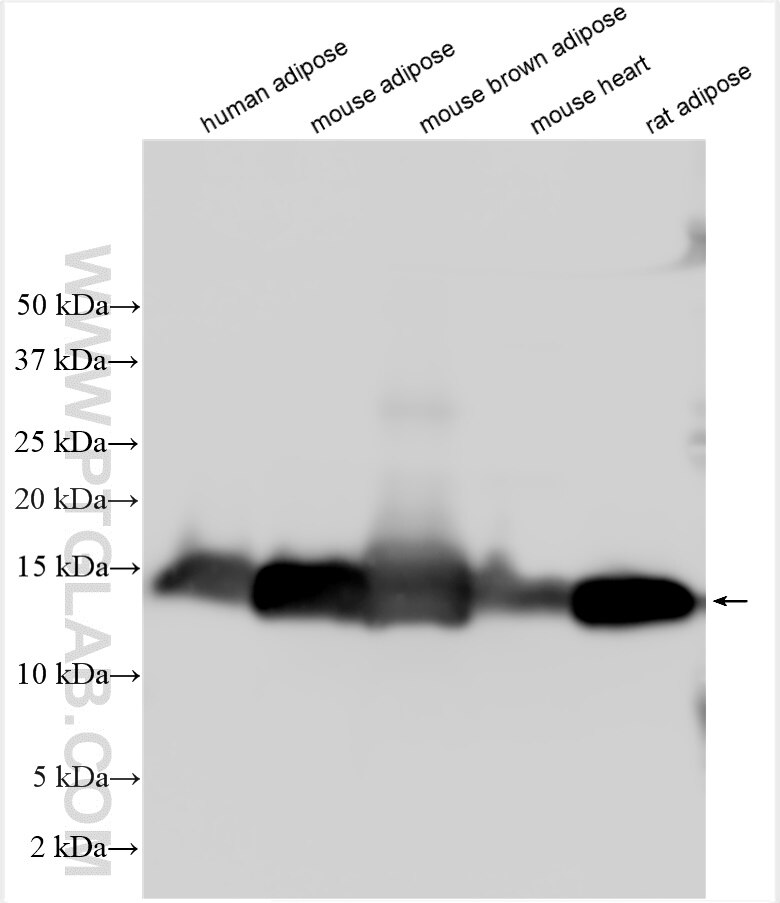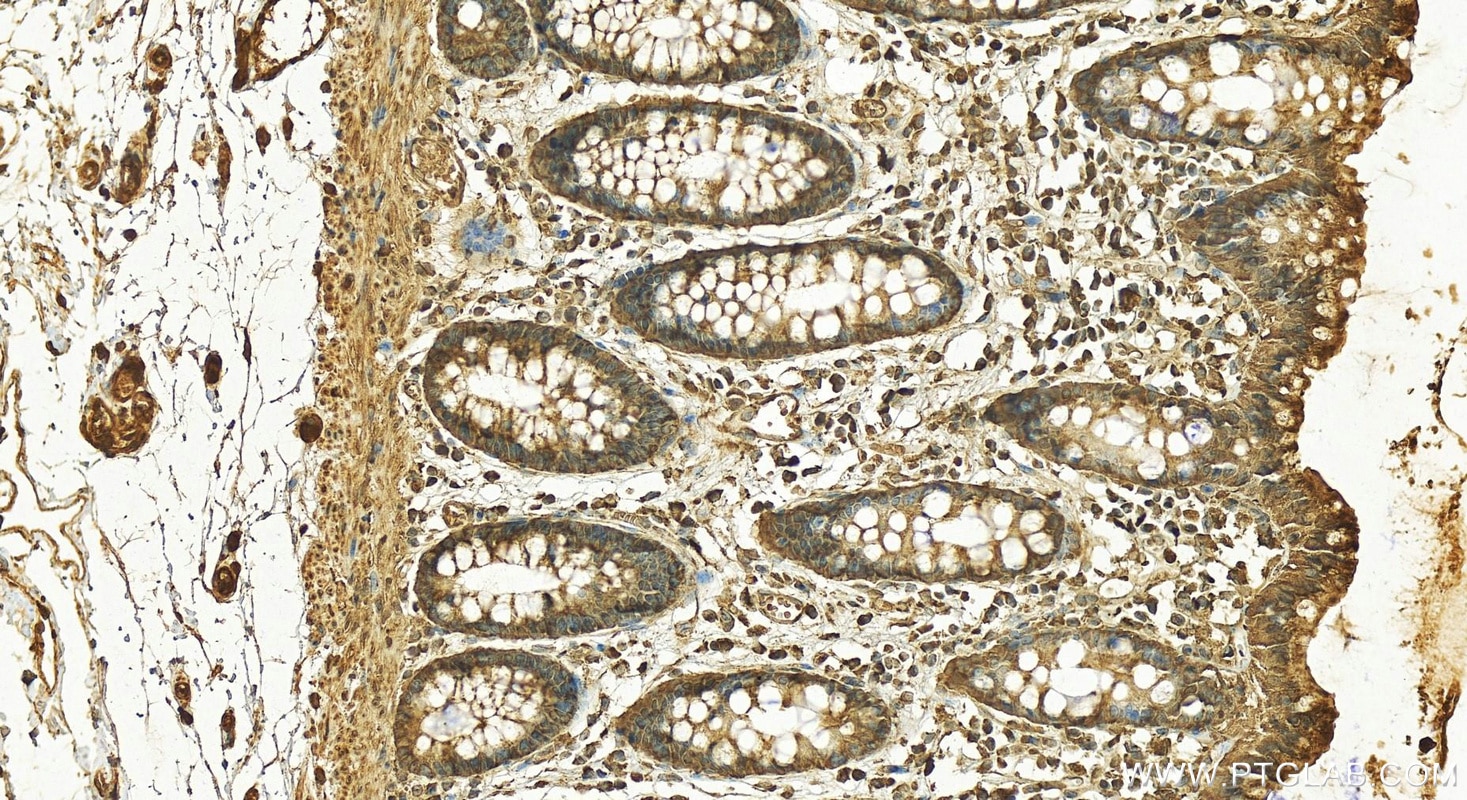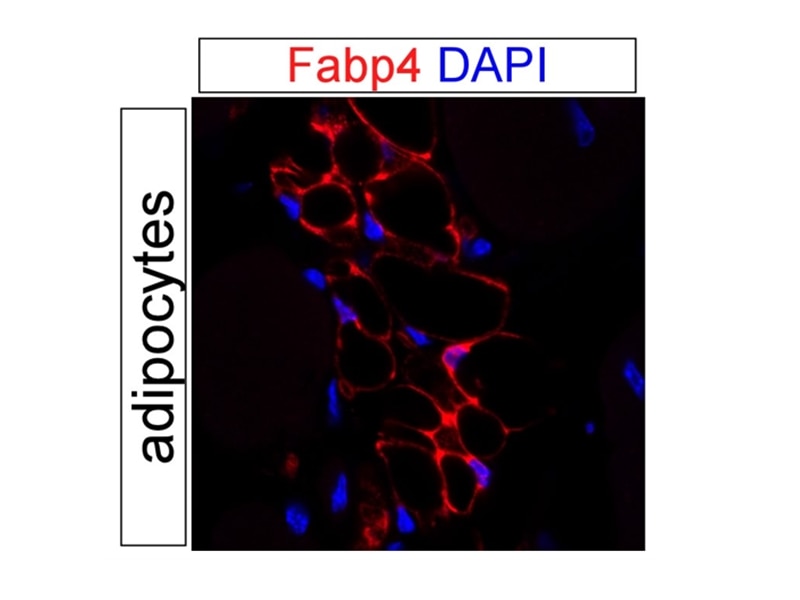Validation Data Gallery
Tested Applications
| Positive WB detected in | rat skeletal muscle tissue, human adipose tissue, MC38 cells, mouse skeletal muscle tissue, mouse adipose tissue, mouse brown adipose tissue, mouse heart tissue, rat adipose tissue |
| Positive IHC detected in | human colon tissue, human cervix tissue, human skin tissue Note: suggested antigen retrieval with TE buffer pH 9.0; (*) Alternatively, antigen retrieval may be performed with citrate buffer pH 6.0 |
| Positive IF detected in | mouse adipose, HUVEC cells |
Recommended dilution
| Application | Dilution |
|---|---|
| Western Blot (WB) | WB : 1:500-1:1000 |
| Immunohistochemistry (IHC) | IHC : 1:50-1:500 |
| Immunofluorescence (IF) | IF : 1:20-1:200 |
| It is recommended that this reagent should be titrated in each testing system to obtain optimal results. | |
| Sample-dependent, Check data in validation data gallery. | |
Published Applications
| WB | See 8 publications below |
| IHC | See 4 publications below |
| IF | See 5 publications below |
Product Information
15872-1-AP targets FABP4 in WB, IHC, IF, ELISA applications and shows reactivity with human, mouse, rat samples.
| Tested Reactivity | human, mouse, rat |
| Cited Reactivity | human, mouse, rat |
| Host / Isotype | Rabbit / IgG |
| Class | Polyclonal |
| Type | Antibody |
| Immunogen | FABP4 fusion protein Ag8631 相同性解析による交差性が予測される生物種 |
| Full Name | fatty acid binding protein 4, adipocyte |
| Calculated molecular weight | 132 aa, 15 kDa |
| Observed molecular weight | 15 kDa |
| GenBank accession number | BC003672 |
| Gene Symbol | FABP4 |
| Gene ID (NCBI) | 2167 |
| RRID | AB_2102440 |
| Conjugate | Unconjugated |
| Form | Liquid |
| Purification Method | Antigen affinity purification |
| UNIPROT ID | P15090 |
| Storage Buffer | PBS with 0.02% sodium azide and 50% glycerol , pH 7.3 |
| Storage Conditions | Store at -20°C. Stable for one year after shipment. Aliquoting is unnecessary for -20oC storage. |
Background Information
Fatty acid binding protein (FABP) 4 is a member of the FABP family which abundantly expressed, fatty acid carrier proteins. FABPs are capable of binding a variety of hydrophobic molecules such as long-chain fatty acids and are important for their uptake and intracellular trafficking. It was first identified as an adipocyte-specific protein, important for the maintenance of lipid and glucose metabolism. It is also detected in macrophages, where it participates in regulating inflammation and cholesterol trafficking via NFκB and PPAR. In more recent studies, FABP4 has been found in a variety of endothelial cells, where it has been identified as a target of VEGF and a regulator of cell proliferation and possibly angiogenesis. Pathologically, FABP4 has been associated with the development of metabolic syndrome, diabetes and cancer and vulnerability of atherosclerotic plaques. FABP4 has been identified as a novel prognostic factor for both adverse cardiovascular events and breast cancer.
Protocols
| Product Specific Protocols | |
|---|---|
| WB protocol for FABP4 antibody 15872-1-AP | Download protocol |
| IHC protocol for FABP4 antibody 15872-1-AP | Download protocol |
| IF protocol for FABP4 antibody 15872-1-AP | Download protocol |
| Standard Protocols | |
|---|---|
| Click here to view our Standard Protocols |
Publications
| Species | Application | Title |
|---|---|---|
Eur Heart J Adipocyte fatty acid binding protein in atherosclerotic plaques is associated with local vulnerability and is predictive for the occurrence of adverse cardiovascular events. | ||
Autophagy Autophagy loss impedes cancer-associated fibroblast activation via downregulating proline biosynthesis. | ||
PLoS Biol Single-cell mapping reveals new markers and functions of lymphatic endothelial cells in lymph nodes. | ||
Int J Obes (Lond) miR-20a regulates adipocyte differentiation by targeting lysine-specific demethylase 6b and transforming growth factor-β signaling. | ||
Am J Physiol Cell Physiol Human Adipocytes from the Subcutaneous Superficial Layer have Greater Adipogenic Potential and Lower PPAR-γ DNA Methylation Levels than Deep Layer Adipocytes. |










